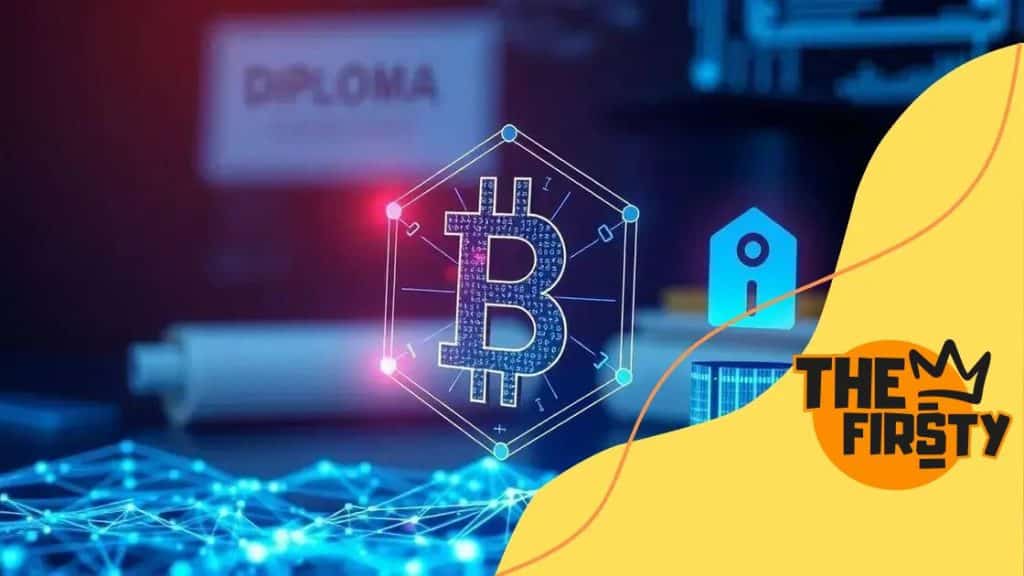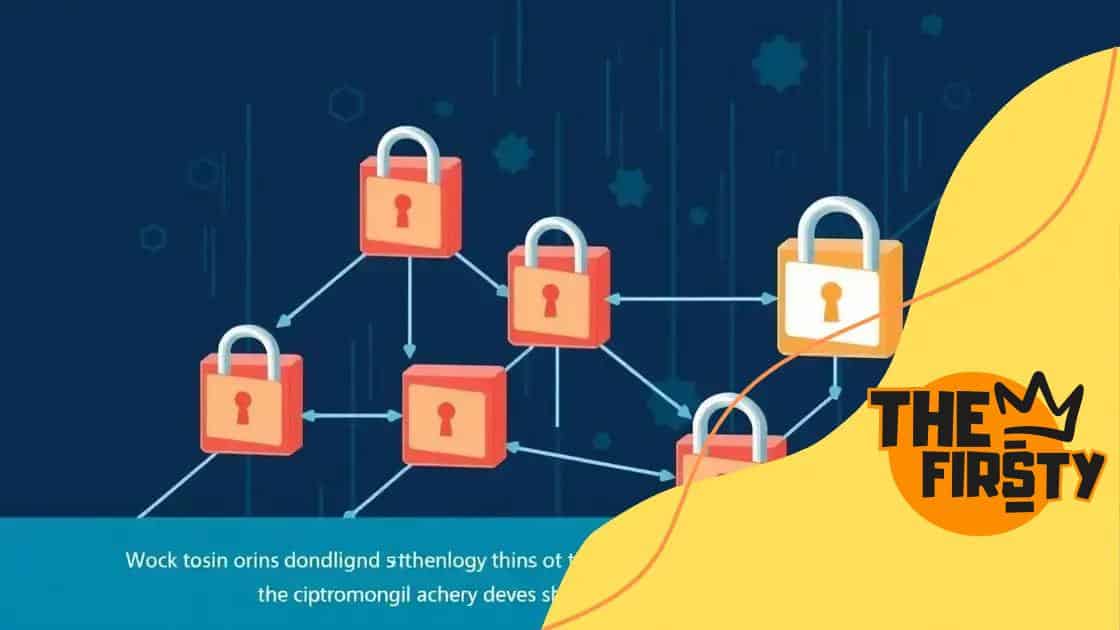How blockchain is changing the way academic credentials are verified

Anúncios
Blockchain is transforming academic credential verification by providing secure, tamper-proof records that enhance transparency, allow real-time verification, and reduce the risk of fraud in the hiring process.
How blockchain is changing the way academic credentials are verified is a transformative topic in education today. Have you ever questioned the authenticity of academic qualifications? This technology promises to create a more secure and reliable verification process.
Anúncios
Understanding blockchain technology
Understanding blockchain technology is essential as it becomes increasingly relevant in various fields, especially in education. At its core, blockchain is a digital ledger that records transactions across many computers. This ensures that the data is securely stored, transparent, and can’t be altered without consensus.
What is Blockchain?
A blockchain consists of blocks of data linked together in a chronological order. Each block has a unique cryptographic hash and contains a set of transactions. When new information is added, it creates a new block, forming a chain.
Key Features of Blockchain
- Decentralization: There is no central authority, and every participant has access to the entire ledger.
- Security: Data is encrypted and immutable, making it very difficult to hack.
- Transparency: All transactions are visible, promoting trust among users.
These features make blockchain particularly suited for verifying academic credentials. Imagine a world where diplomas are instantly verified without the need for lengthy processes. It streamlines operations for educational institutions and employers alike.
Anúncios
To illustrate, when a student completes a course, their credential can be stored in the blockchain. This form of verification assures employers that the qualifications are legitimate, reducing the risk of fraud and the time taken for background checks. Potential employers can access this information securely, ensuring a faster hiring process.
The importance of credential verification
The importance of credential verification cannot be understated in today’s fast-paced job market. With increasing incidents of fraud and misrepresentation in resumes, organizations need to prioritize verifying the educational and professional backgrounds of candidates.
Why Verify Credentials?
Verifying credentials helps employers ensure they are hiring qualified candidates. The consequences of hiring someone with falsified credentials can lead to poor job performance and legal issues. Beyond compliance, having a verified workforce fosters trust and integrity within an organization.
Key Benefits of Credential Verification
- Reduces Fraud: By confirming educational claims, organizations mitigate the risk of employing individuals with fake qualifications.
- Enhances Recruitment Efficiency: A streamlined verification process allows employers to make informed hiring decisions faster.
- Boosts Organizational Reputation: Companies known for thorough verification practices attract high-quality candidates who value integrity.
Moreover, when candidates know their credentials are verified, they take the process more seriously. This leads to a more qualified talent pool. Companies that embrace credential verification as part of their hiring process also improve their own standards and culture.
Ultimately, adopting a thorough verification process is not just a protective measure; it’s a strategic initiative that promotes a trustworthy work environment. Candidates who have valid and verified credentials can showcase their skills and contribute positively to their organizations.
How blockchain enhances security and transparency

How blockchain enhances security and transparency is fundamental in many sectors, especially in education. Security in record-keeping is vital, and blockchain technology ensures that records cannot be easily altered or forged.
Unbreakable Security
The decentralized nature of blockchain means that no single entity controls the data. Each transaction is linked to the previous one, creating an unbreakable chain. This makes it hard for hackers to corrupt the database. For instance, once a credential is recorded on the blockchain, it’s nearly impossible to change it without the consensus of all participants.
Boosting Transparency
Transparency is another crucial feature. Since everyone in the network can view the changes made to the blockchain, it promotes trust among users. Academic institutions can share verified credentials openly, reducing the risk of fraud while increasing the credibility of their programs.
- Immediate Verification: Employers can verify a candidate’s qualifications instantly, verifying records in real-time.
- Accessible Data: All parties involved can access the same information, ensuring everyone is on the same page.
- Accountability: If discrepancies arise, it’s easier to trace them back to their source on the blockchain, maintaining responsibility.
Additionally, in an ever-evolving digital landscape, where data breaches are common, the need for secure platforms becomes paramount. Blockchain tackles these issues head-on, providing an infrastructure designed to thwart unauthorized access and maintain the integrity of stored information.
The combination of security and transparency offered by blockchain technology not only protects credentials but also fosters a culture of trust among educational institutions, employers, and candidates.
Real-world applications of blockchain in academia
Real-world applications of blockchain in academia are transforming how educational institutions manage records and qualifications. By incorporating this technology, schools can enhance processes, making them more efficient and reliable.
Digital Diplomas
One key application is the issuance of digital diplomas directly on the blockchain. Graduates receive secure digital credentials that are easily verifiable. This reduces the chances of diploma fraud, making it simpler for employers to trust the qualifications of applicants.
Academic Record Management
Institutions can utilize blockchain for maintaining student records, including grades and course completions. This creates a permanent and tamper-proof record that is accessible to authorized parties. This method streamlines the transfer of credits between institutions.
- Interinstitutional Collaboration: Universities can share real-time data securely, improving joint research efforts.
- Course Verification: Online learners can verify their course outcomes with ease, enhancing their appeal to potential employers.
- Efficient Data Management: Educational institutions save time and resources by digitizing traditional processes.
Additionally, academic institutions are beginning to experiment with blockchain-based platforms for peer-reviewed research. This allows researchers to submit their findings directly to a transparent system, ensuring proper attribution and enhancing trust in the academic community. These applications not only modernize record-keeping but also foster innovation and collaboration among educational institutions.
As more schools adopt blockchain technology, the landscape of education will continue to evolve. The streamlined processes promise to provide greater security and reduce administrative burdens.
Future trends in academic credential verification
Future trends in academic credential verification are expected to be shaped by advancements in technology, particularly with the integration of blockchain technology. As educational institutions embrace digital solutions, the methods for verifying credentials will grow more efficient and transparent.
Decentralized Systems
One of the emerging trends is the use of decentralized systems for credential verification. This allows for real-time verification of diplomas and transcripts without relying on a central authority. With blockchain, schools can issue permanent records that students can share with potential employers instantly.
Artificial Intelligence Integration
Another trend involves integrating artificial intelligence (AI) into the verification process. AI can analyze large data sets quickly, identifying patterns and discrepancies that human evaluators might miss. This technology can streamline the verification process, making it faster and more reliable.
- Automated Checks: AI can automate the checking of credentials, reducing the manpower needed for verification.
- Fraud Detection: Machine learning algorithms can spot inconsistencies in applications, helping to prevent fraud.
- Customizable Systems: Institutions can adapt AI tools to meet their specific verification needs, enhancing efficiency.
Moreover, with an increase in online education, the demand for credential verification will likely rise. As more students earn degrees from diverse institutions, the systems in place must evolve to accommodate this growing complexity.
While these trends are shaping the future, the conversation around privacy and data protection is critical. Implementing stronger measures to protect students’ information is essential as verification processes become more digital. Educational institutions must balance innovation with the need for security to build trust in their verification systems.
Conclusion: In summary, blockchain technology is revolutionizing the way academic credentials are verified. As we look to the future, we can expect significant advancements in security and efficiency in the verification process. The integration of AI will further streamline how institutions manage and share records. Emphasizing these trends not only ensures safer credentialing but also promotes trust among students and employers. By harnessing the potential of these technologies, the educational landscape will become more secure and transparent.
FAQ – Frequently Asked Questions about Academic Credential Verification with Blockchain
What is blockchain technology in the context of academic credentials?
Blockchain technology is a decentralized digital ledger that securely records academic credentials, ensuring their authenticity and preventing fraud.
How does blockchain improve the verification process for employers?
Employers can verify candidates’ academic credentials in real-time, reducing the time and effort spent on background checks.
What benefits does AI bring to credential verification?
AI can automate the verification process, detect potential fraud, and analyze data more quickly than human evaluators.
Are digital diplomas more secure than traditional ones?
Yes, digital diplomas stored on a blockchain are more secure as they are tamper-proof and easily verifiable, reducing the likelihood of counterfeit documents.





